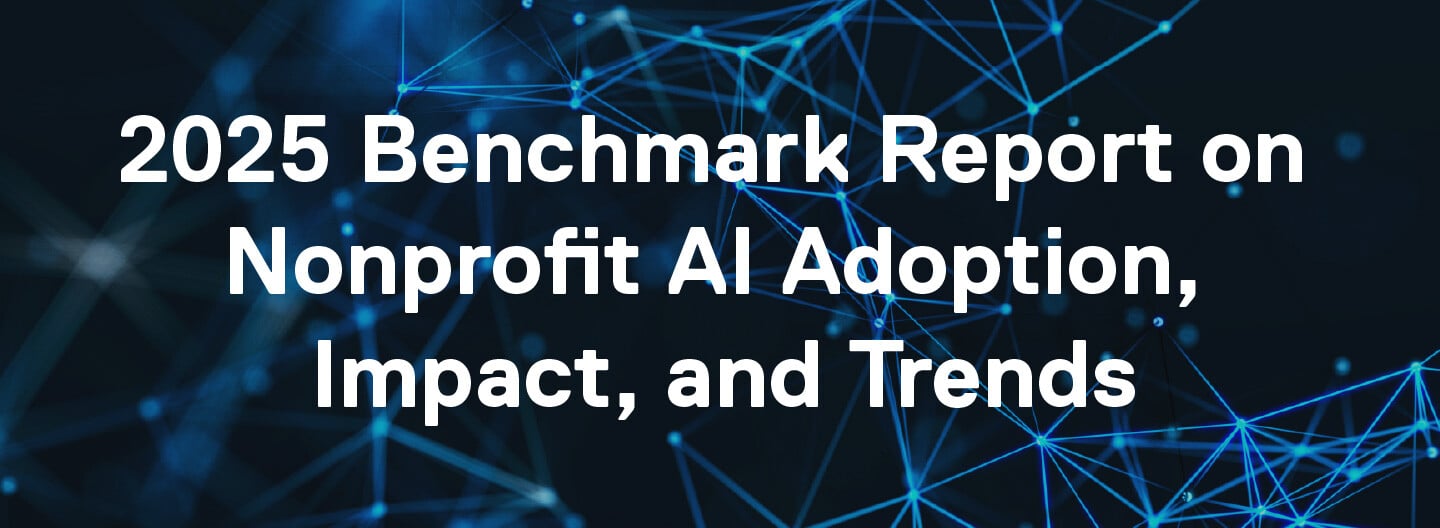The nonprofit working world is changing by the second. Remote work is now typical in many organizations, and incredibly sophisticated technology allows us to learn more about our audiences, automate tasks, and become more efficient.
Isaac Shalev is the president of Sage70, a technology consultancy dedicated to making data work for nonprofits. He shared some of his thoughts with us on the role of artificial intelligence in nonprofit workspaces and how we can expect to see its presence increase. We also discussed the changes that nonprofits will need to make in order to prepare for and benefit from artificial intelligence technology — and avoid being left behind.

AI, data, and their implications for nonprofit workspaces will be a key topic discussed at TechSoup's online conference, the Future of Work. We'll hear from industry experts about how nonprofits can adapt to a changing world of work, while helping their staff, volunteers and wider communities thrive.
The State of Artificial Intelligence
Shalev explains that artificial intelligence is already a part of our lives. Perhaps without realizing it, we frequently interact with AI through chatbots, voice assistants like Siri and Alexa, and transcription tools. There's also a multitude of emerging AI technologies, including illustrator tools that create detailed images from a brief or prompt, and predictive modeling for budgets and fundraising.
While these technologies take on some roles previously performed by a human being, we are far from a world where human intervention is not needed at all. Shalev explains that while AI might get us most of the way there, there is always the need for a human touch at the "last mile." Transcriptions are rarely perfect, so sometimes you'll need to have someone proofread and alter a few words that weren't transcribed correctly. The illustration tools mentioned above can create an impressive image, but you'll likely need someone to do the final touches or crop the image to the right size for an Instagram post.
As well as the continued need for human intervention in AI, Beth Kanter discusses in depth the link between AI and increased well-being in nonprofit workplaces. Her research is exciting, showing that the presence of artificial intelligence in nonprofits can help us to increase impact without burning out employees. Beth Kanter will be speaking at our Future of Work conference on October 25 and 26, which is a great opportunity to learn more about this particular area.
AI for Nonprofits
It's important for nonprofits to consider their readiness to adopt AI technologies. Some solutions currently on the market don't serve nonprofit needs, but that will not be the case forever. The technology is developing fast, and you'll want to be ready when it's suitable and affordable for the nonprofit market.
Shalev explains that nonprofits are prone to workflows that are not particularly systemized, which can cause them to stumble when it comes to automating those workflows. For this reason, nonprofit organizations need to invest in their infrastructure and systems sooner rather than later in order to take full advantage of AI technologies when they become available.
Building the Right Skills
There will be a need for different kinds of skills in nonprofit teams as they build more artificial intelligence into their workflows, and a crucial one is curiosity. Organizations will need staffs who understand how to communicate well with AI, ask it the right questions, and feed data in the correct way.
Like chatbots, most AIs communicate using natural language, but this is imperfect and limited. "When I say 'restricted' and I'm talking to a nonprofit professional," Shalev explains, "it means something very different than when I'm talking to a lifeguard." These are the kinds of intricacies that AI will struggle to process, and so there is a need for people who will develop the processes by which we teach AI how to communicate with us. Right now, humans are doing most of the work in making themselves intelligible to AI, but in time the technology won't need us to do that.
Nonprofits will also need staff or consultants with in-depth knowledge of how to properly communicate with AI and conduct quality control, especially when relying on it to make decisions. As AI becomes more sophisticated and a generation of staff comes in who have never done manual data entry, teams will need to develop oversight and quality assurance methods that do not require them to understand exactly what processes it is replicating. Rather, we'll soon be training people to give AI the right prompts to achieve the results we want.
As described in Beth Kanter's work, the increasing presence of artificial intelligence in our workplaces will free up nonprofit staff to do more of the human-centered work in their organizations. Organizations will be able to use their workforce to more effectively pursue their mission, with repetitive tasks taken on by AI.
Learn and Adapt
Many of these changes are still a long way away, but nonprofits can prepare by streamlining their systems and investing in infrastructure that will make it possible to automate them when the time comes. Looking ahead is crucial in order to make the most of new technology as it becomes available.
The working world is changing in many ways, and we want to equip nonprofits with the skills and technology they need to not only keep up, but thrive among the changes. Join us for a two-day online conference on October 25 and 26, where we'll explore the methods nonprofits can use in order to create a more equitable sector and withstand new challenges. We will hear from experienced professionals in the nonprofit field about staff well-being and disaster management, as well as the value of data and AI in improving our workspaces.
Top photo: Shutterstock








